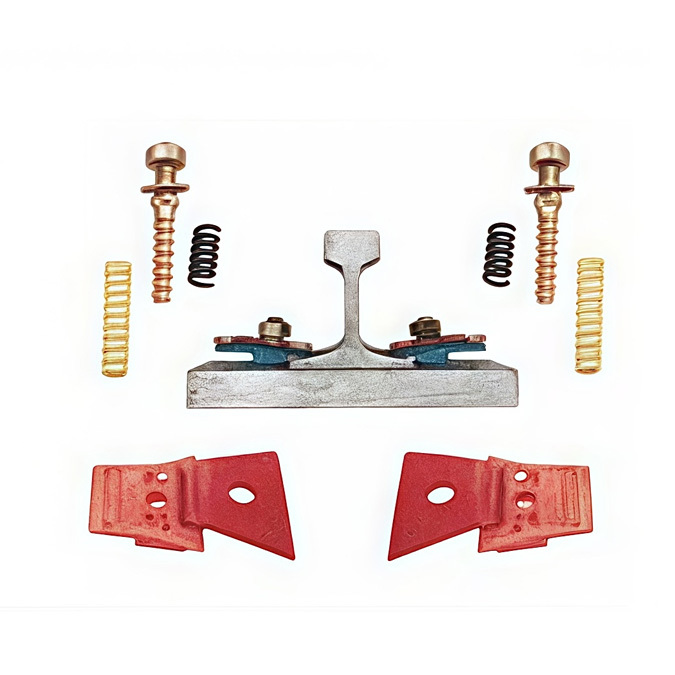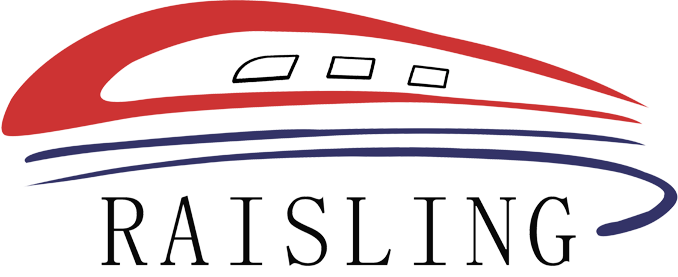-
ProductsAt present, the company has the ability to produce 50000 tons of rail buckle accessories annually. The product series includes various specifications of spring bars Gauge baffles, switch special pads, joint clamps for 43kg, 50kg, 60kg steel rails, various export products, etc

-

-
AboutThe company was established in 1994 and is a production enterprise specializing in the research and development, production, and sales of railway line specific accessories

Understanding Rail Fastening Systems: Essential Components for Modern Rail Infrastructure
Jun 04,2025
Rail fastening systems are vital components of railway infrastructure, playing a crucial role in maintaining the integrity and stability of rail tracks. These systems ensure that rails are securely attached to sleepers (ties) while allowing for necessary movements caused by thermal expansion, vibrations, and other operational stresses. Without reliable rail fastening, the safety and performance of

There are various types of rail fastening systems, each designed for specific applications and environments. Generally, these systems can be categorized into two main types: direct fastening and indirect fastening systems. Direct fastening systems attach the rail directly to the concrete or wooden sleeper using bolts, clips, or other mechanical devices. In contrast, indirect fastening systems utilize pads or insulators to provide additional cushioning and support, which can be particularly beneficial in reducing vibration and noise.
A well-designed rail fastening system contributes not only to the structural integrity of the railway but also to passenger comfort and operational efficiency. For instance, systems that effectively minimize vibration contribute to a smoother ride experience, while also protecting the track and rolling stock from wear and tear. Furthermore, rail fastening systems must be resilient against various environmental factors, including moisture, temperature fluctuations, and corrosive elements.
In terms of installation and maintenance, it is essential for railway operators to choose the appropriate fastening system based on their specific needs, taking into account factors such as the type of rail, expected loads, and local environmental conditions. Regular inspection and maintenance of these fastening systems are necessary to ensure their longevity and optimal performance. This includes checking for wear and tear, ensuring tight connections, and replacing any damaged components promptly.
Advancements in technology have led to the development of innovative fastening solutions that enhance durability, reduce maintenance needs, and improve overall safety. For instance, some modern systems use advanced materials that provide better resistance to wear, while others incorporate design features that enable quicker installation and adjustment.
In summary, rail fastening systems are indispensable in ensuring the stability and safety of rail transportation. By understanding the different types of fastening systems and their applications, professionals in the rail industry can make informed decisions that enhance operational efficiency and safety. Investing in high-quality rail fastening solutions is essential for maintaining the reliability and longevity of railway infrastructure, ultimately supporting the growing demand for efficient and effective rail transportation services.
Recommended
There is one sheet production line and two high-precision engraving machines, with an annual production capacity of 6 million railway special height adjustment pads.
Electrostatic spraying workshop
There is one electrostatic spray equipment production line and one spray paint production line, with an annual production capacity of 10,000 tons.
Contact Us
Henan Xinda Railway Equipment Co., Ltd
Fax: +86-372-2615999
Tel: +86-18567891234
Email:info@xindarail.com
Send us your request
we will get in touch with you as soon as possible
COOKIES
Our website uses cookies and similar technologies to personalize the advertising shown to you and to help you get the best experience on our website. For more information, see our Privacy & Cookie Policy
COOKIES
Our website uses cookies and similar technologies to personalize the advertising shown to you and to help you get the best experience on our website. For more information, see our Privacy & Cookie Policy
These cookies are necessary for basic functions such as payment. Standard cookies cannot be turned off and do not store any of your information.
These cookies collect information, such as how many people are using our site or which pages are popular, to help us improve the customer experience. Turning these cookies off will mean we can't collect information to improve your experience.
These cookies enable the website to provide enhanced functionality and personalization. They may be set by us or by third-party providers whose services we have added to our pages. If you do not allow these cookies, some or all of these services may not function properly.
These cookies help us understand what you are interested in so that we can show you relevant advertising on other websites. Turning these cookies off will mean we are unable to show you any personalized advertising.
COOKIES
Our website uses cookies and similar technologies to personalize the advertising shown to you and to help you get the best experience on our website. For more information, see our Privacy & Cookie Policy
COOKIES
Our website uses cookies and similar technologies to personalize the advertising shown to you and to help you get the best experience on our website. For more information, see our Privacy & Cookie Policy
These cookies are necessary for basic functions such as payment. Standard cookies cannot be turned off and do not store any of your information.
These cookies collect information, such as how many people are using our site or which pages are popular, to help us improve the customer experience. Turning these cookies off will mean we can't collect information to improve your experience.
These cookies enable the website to provide enhanced functionality and personalization. They may be set by us or by third-party providers whose services we have added to our pages. If you do not allow these cookies, some or all of these services may not function properly.
These cookies help us understand what you are interested in so that we can show you relevant advertising on other websites. Turning these cookies off will mean we are unable to show you any personalized advertising.

